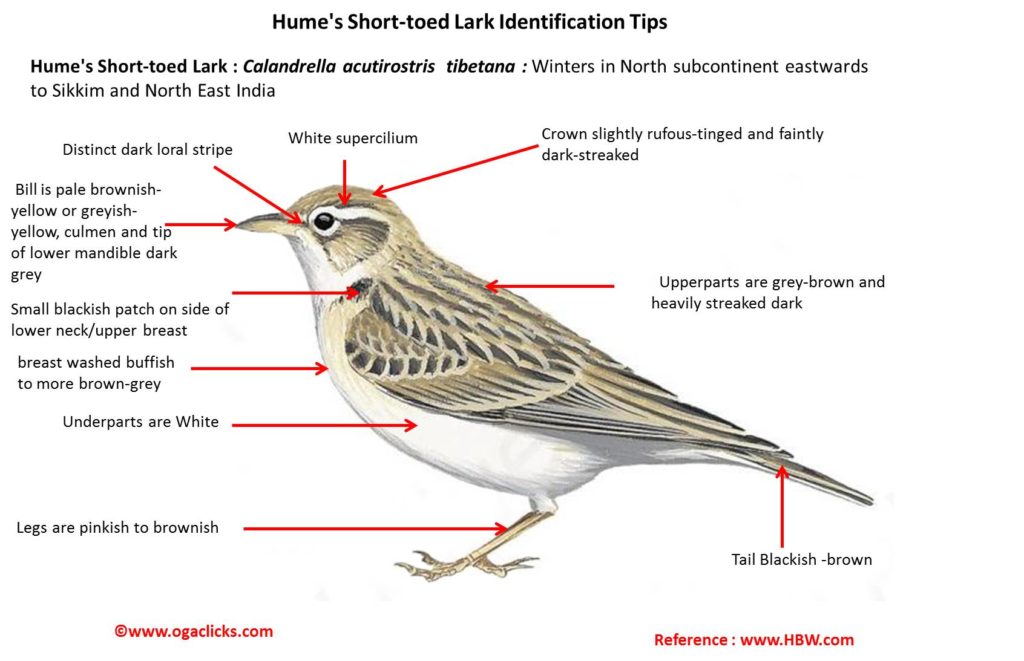
Hume’s Short-toed Lark Calandrella acutirostris
Etymology :
- Calandrella : Greek word for Lark derived from kalandros – Calandra meaning Lark
- Acutirostris : Latin word acutus –sharp-pointed ; rostris – billed
Vernacular Names : Hindi: Bagheri
Distribution in India: Summer Visitor in Himalayas and Winter Visitor in North India
Description: Size of 12-14 cm. It is a small, neat, rather pale lark with long tertials almost cloaking tips of folded wings. The nominate race has white supercilium, and distinct dark loral spot. It is overall grey-brown or brown-grey above, the crown slightly rufous-tinged and faintly dark-streaked .The hindneck is rather plain, upperparts are fairly heavily streaked dark, uppertail-coverts are rufous-tinged. The wings are dark grey-brown, upperwing-coverts and tertials have buffish tips and edges, remiges with narrow pale edges; tail is blackish-brown, central feather pair with broad brownish edges, outermost pair with whitish outer web and usually some pale on inner web. It is whitish below, breast washed buffish to more brown-grey, small blackish patch on side of lower neck/upper breast. The bill is pale brownish-yellow or greyish-yellow, culmen and tip of lower mandible dark grey; legs pinkish to brownish. The sexes are similar in plumage, female on average smaller than male.
Habitat : It breeds in sandy and gravelly habitats with very sparse vegetation, at elevations of 1000–5000 m. It Winters in similar or slightly less barren habitats at low altitudes.
Food habits : It eats seeds and invertebrates. It forages on ground, in flocks in non-breeding season.
Breeding habits: They breed in May–Aug. The mating display by male is a song flight ,it rises high, and hangs more or less still or circles somewhat, alternating between a few wing beats and short dipping glides on spread wings and partly fanned tail. The nest is built by both sexes. The nest is a depression in ground, generally sheltered by tussock, lined with grass, hair and some moss, sometimes rimmed with gravel. They lay a clutch of 2–4 eggs. The incubation is either by female alone or by both sexes. The incubation period is 10–11 days. The chicks are fed by both parents and leave nest at 10–11 days.